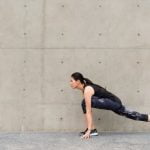Running is one of the best exercises to get fit, offering a multitude of benefits for both physical and mental well-being. Whether you’re a seasoned runner or just starting out on your fitness journey, incorporating running into your routine can help improve your overall health and vitality. Not only does running help in building endurance and strength, but it also boosts cardiovascular health, burns calories, and reduces stress levels.
The physical benefits of running are numerous, from strengthening muscles and bones to improving heart health and increasing lung capacity. Mentally, running has been shown to reduce anxiety and depression, boost mood and self-esteem, and even enhance cognitive function. It truly is a holistic workout that can benefit all aspects of your well-being.
Before hitting the pavement for a run, it’s important to perform proper warm-up exercises to prevent injury and optimize performance. By ensuring your muscles are adequately prepared for the activity ahead, you can reduce the risk of strains or sprains while also improving your overall running experience. Remember, maintaining proper form while running is key to maximizing the effectiveness of the workout and avoiding unnecessary strain on your body.
Benefits of Running
Running is not just a great way to stay in shape; it also offers a plethora of physical and mental benefits. For starters, running is an effective cardiovascular exercise that can help improve your heart health by strengthening your heart muscle and improving blood circulation. Regular running also boosts your lung capacity, allowing you to take in more oxygen during your workout sessions and improving overall respiratory function.
In addition to the physical benefits, running has numerous mental advantages as well. Running has been shown to reduce stress levels and alleviate symptoms of anxiety and depression.
The release of endorphins during a run can create a sense of euphoria known as the “runner’s high,” which can greatly improve mood and mental well-being. Many runners also report experiencing increased focus and mental clarity after a good run, making it an excellent way to start or end your day on a positive note.
Whether you prefer solo runs or joining group events, the social aspect of running can also be incredibly rewarding. Connecting with fellow runners through local run clubs or virtual communities can provide motivation, support, and camaraderie that enhance the overall experience of running. So lace up those sneakers, hit the pavement, and discover firsthand why running is one of the best exercises to get fit both physically and mentally.
Warm-Up Exercises
Running is an excellent form of exercise that offers numerous benefits for both physical and mental health. However, before diving into a running session, it is crucial to perform proper warm-up exercises to prepare your body and prevent injuries. The best warm-up exercises to do before starting a running session include dynamic stretches, leg swings, hip circles, and brisk walking.
Dynamic stretches such as leg swings and hip circles help loosen up muscles and joints, allowing for better range of motion during the run. These movements also help improve blood circulation and increase muscle temperature, which can enhance performance and reduce the risk of injury. Additionally, incorporating some brisk walking into your warm-up routine helps elevate your heart rate gradually and mentally prepare you for the upcoming workout.
It is essential to customize your warm-up routine based on your fitness level and specific needs. Beginners should focus on gentle movements to prepare their bodies for running, while experienced runners may benefit from more intense dynamic stretches. By taking the time to properly warm up before a running session, you set yourself up for a safe and effective workout that will contribute to your overall fitness goals.
| Warm-Up Exercise | Description |
|---|---|
| Leg Swings | Helps loosen up hip flexors and hamstrings. |
| Hip Circles | Improves hip mobility and activates core muscles. |
| Brisk Walking | Elevates heart rate gradually and mentally prepares for running. |
Importance of Proper Form
Proper running form is essential for maximizing the benefits of your workout and preventing injuries. By maintaining the correct posture and technique while running, you can improve your efficiency, speed, and overall performance. One common mistake that many runners make is slouching or leaning forward, which can put unnecessary strain on the back and lead to discomfort or pain. To avoid this, it’s important to keep your back straight, shoulders relaxed, and head aligned with your spine.
Foot Placement
Another crucial aspect of proper running form is foot placement. Landing properly on your feet can help reduce the risk of injuries such as shin splints or Achilles tendonitis. Aim to strike the ground with the middle of your foot rather than your heel or toes to distribute impact evenly and propel yourself forward efficiently. By focusing on a midfoot strike, you can also improve your balance and stability while running.
Arm Movement
In addition to maintaining a strong core and engaging your leg muscles, proper arm movement plays a significant role in efficient running form. Keep your arms relaxed at a 90-degree angle, swinging them back and forth in line with your body’s movement.
Avoid crossing your arms over your chest or holding them too tightly, as this can waste energy and cause tension in your upper body. By syncing up your arm movements with your stride, you can increase propulsion and maintain momentum throughout your run.
Overall, paying attention to the details of proper running form can make a significant difference in the effectiveness of your workout. By practicing good posture, foot placement, and arm movement techniques, you can not only enhance your performance but also reduce the risk of injury and discomfort. Remember to focus on maintaining a smooth and efficient stride while staying mindful of these key elements to get the most out of your running exercises for optimal fitness results.
Best Running Exercises for Beginners
Running is an excellent way to improve your cardiovascular fitness, burn calories, and strengthen your muscles. For beginners looking to kickstart their fitness journey, incorporating running exercises can be a great first step towards achieving their health goals. One of the best running exercises to get fit for beginners is the walk/run method.
This approach involves alternating between walking and running intervals to build endurance gradually. Start by walking for a few minutes, then switch to jogging or running for a short period before returning to walking. This method allows beginners to ease into running while still challenging their bodies.
Another beginner-friendly running exercise is the “Couch to 5K” program, which provides a structured plan for new runners. This program gradually increases the duration and intensity of running sessions over several weeks, making it easier for beginners to progress at their own pace. Additionally, incorporating hill repeats into your running routine can help build strength and stamina.
Find a gentle incline or hill in your area and run up at a moderate pace before jogging back down for recovery. Repeat this process several times to reap the benefits of hill training.
To track your progress and stay motivated, consider using a smartphone app or wearable fitness tracker to monitor your distance, pace, and time spent running. Setting incremental goals and celebrating small achievements along the way can help you stay committed to your fitness journey. Remember to listen to your body, rest when needed, and stay consistent with your running routine to improve your overall health and fitness levels effectively.
| Running Exercise | Description |
|---|---|
| Walk/Run Method | Alternating between walking and running intervals for gradual progression. |
| Couch to 5K Program | A structured plan that increases duration and intensity over time for beginners. |
| Hill Repeats | Running up hills to build strength and endurance in your workouts. |
Advanced Running Techniques
Hill Repeats
For experienced runners looking to challenge themselves and improve their fitness level, hill repeats are an excellent exercise to incorporate into their running routine. Hill repeats involve running up a steep incline multiple times, which helps build strength in the legs and improve cardiovascular endurance.
This workout not only targets different muscle groups than flat terrain running but also enhances speed and overall performance. By tackling hills regularly, experienced runners can push their boundaries and see significant improvements in their running capabilities.
Fartlek Training
Fartlek training is a form of speed workout that translates to “speed play” in Swedish. This technique involves varying your pace throughout a run by alternating between periods of fast running and slower jogging or walking.
Fartlek training not only challenges the cardiovascular system but also improves mental toughness and resilience during runs. Experienced runners can benefit from incorporating fartlek sessions into their training regimen as it helps increase speed, endurance, and adaptability to different paces during races or intense workouts.
Long-Distance Runs
Long-distance runs are another advanced running technique that can benefit experienced runners looking to take their fitness level to new heights. Engaging in long-distance runs helps build stamina, mental fortitude, and prepares the body for enduring races or marathons.
By gradually increasing the distance of these runs over time, experienced runners can see improvements in cardiovascular fitness, muscular endurance, and pacing strategies. Long-distance runs also provide an opportunity for reflection, mindfulness, and a sense of accomplishment as runners conquer greater distances with each session.
By incorporating these advanced running techniques into their training routine, experienced runners can continue challenging themselves physically and mentally while reaping the benefits of improved fitness levels. These exercises not only push the limits of what the body can achieve but also help enhance overall performance in races or other competitive events. Remember to listen to your body, stay hydrated, and ensure proper recovery after intense workouts to prevent injuries and maintain optimal fitness levels for long-term success.
Interval Training
To incorporate interval training into your running routine, here are some of the best running exercises to get fit using this technique:
- Pyramid Intervals: Start with a short burst of high-intensity running, then increase the duration with each interval before gradually decreasing back down.
- Tabata Sprints: Perform 20 seconds of all-out sprinting followed by 10 seconds of rest, repeated for a total of 4 minutes.
- Fartlek Runs: Mix up your pace by alternating between fast and slow segments during your run, keeping it unstructured and fun.
Adding interval training to your running routine not only improves your cardiovascular fitness but also helps build endurance, increase speed, and burn more calories in a shorter amount of time. With consistent practice, you will see improvements in both your performance and overall fitness level. So lace up those running shoes and give these best running exercises a try for optimal results.
Cool Down Routine
After a rigorous running session, it is essential to cool down properly to aid in muscle recovery and prevent soreness. Cooling down allows your heart rate and breathing to gradually return to normal levels, preventing sudden drops in blood pressure and reducing the risk of dizziness or fainting. Incorporating a well-rounded cool-down routine can help improve flexibility, reduce muscle tension, and promote overall relaxation post-workout.
To ensure an effective cool-down, consider integrating the following best cool-down exercises into your routine:
- Stretching: Perform static stretches targeting major muscle groups such as hamstrings, quadriceps, calves, and hip flexors. Hold each stretch for 15-30 seconds to increase flexibility and reduce muscle tightness.
- Foam Rolling: Use a foam roller to apply gentle pressure on different muscle groups to release tension and trigger points. This self-myofascial release technique helps in improving circulation and reducing muscle soreness.
- Light Cardio: Engage in low-intensity cardio activities like walking or cycling for 5-10 minutes to gradually decrease heart rate and promote blood flow to aid in flushing out metabolic waste products from muscles.
Incorporating these best cool-down exercises into your post-running routine can help optimize your recovery process and minimize the risk of injury. Remember that cooling down is just as important as warming up before a workout, so be sure not to skip this crucial step in your fitness regimen. Stay consistent with your cool-down routine to enhance performance, prevent overuse injuries, and maintain overall fitness levels for sustained results.
Conclusion
In conclusion, running is undoubtedly one of the best exercises to improve overall fitness and well-being. The physical benefits, such as increased cardiovascular health, weight loss, and muscle strengthening, combined with the mental benefits of stress relief and improved mood make running a valuable addition to any fitness routine. By incorporating running exercises into your weekly schedule, you can achieve both short-term goals like weight loss and long-term benefits such as improved stamina and endurance.
For beginners looking to start their fitness journey with running, it is essential to begin with beginner-friendly exercises like brisk walking or jogging at a comfortable pace. Gradually increasing the intensity and duration of your runs will help build strength and endurance over time. As you progress in your fitness level, incorporating advanced running techniques like hill sprints or fartlek training can challenge your body in new ways and elevate your fitness level even further.
Furthermore, by integrating interval training into your running routine, you can enhance your endurance, speed, and overall fitness levels. Alternating between periods of high-intensity running and recovery periods can maximize the efficiency of your workout and help you reach new fitness goals. Remember to always prioritize proper form during your runs to prevent injury and ensure that you are getting the most out of each exercise session.
To conclude, for optimal results in improving your fitness level through running exercises, consistency is key. So lace up those sneakers and hit the pavement – your body will thank you for it.
Frequently Asked Questions
Can I Get in Shape by Just Running?
Running alone can be an effective way to improve cardiovascular fitness and stamina, but it may not be enough to achieve a well-rounded level of physical fitness. Incorporating strength training and flexibility exercises along with running can help prevent injury and build overall strength.
What Is the Fastest Way to Get in Running Shape?
The fastest way to get in running shape is to follow a structured training plan that includes a mix of speed work, long runs, and recovery days. Gradually increasing mileage and intensity while allowing for proper rest and recovery are key components to improving running fitness quickly.
What Is the Best Exercise to Get Better at Running?
The best exercise to get better at running is running itself. Consistent practice, whether it’s interval training, tempo runs, or long slow distance runs, will help improve endurance and speed over time. Strength training exercises like squats, lunges, and core workouts can also complement running by building muscle strength and stability.

Passionate about providing useful information to anyone with an interest in the field of Personal Training, I strive to pass on to our readers quality information and to answer any questions about Personal Trainers, the work they do and how to become one.





